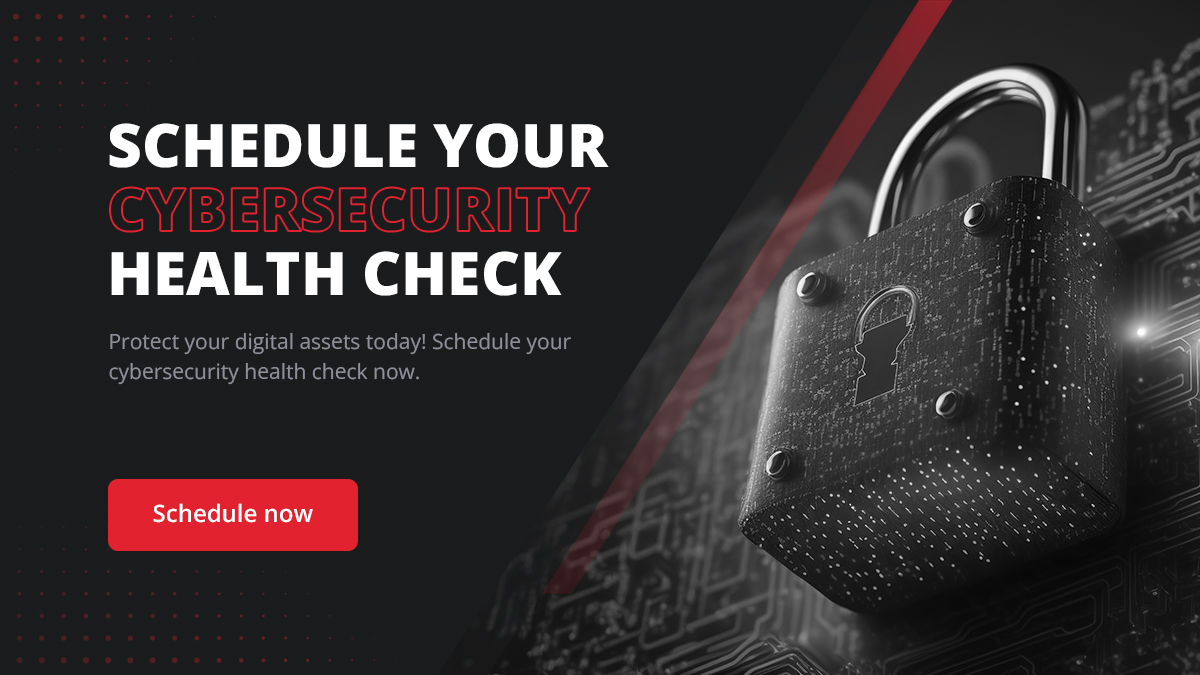How to Choose the Right MSP for You? Check Out Our Guide.
Security assessments are comprehensive evaluations to identify vulnerabilities and weaknesses within an organization's information systems and infrastructure. These assessments are critical for understanding how susceptible an organization is to various security threats.
The primary purpose of a security assessment is to provide an organization with a clear understanding of its security posture. It highlights potential vulnerabilities and offers recommendations for strengthening defenses against cyber threats.

In the current digital era, where cyber threats are increasingly sophisticated and pervasive, security assessments have become indispensable. They are crucial in protecting sensitive data, ensuring business continuity, and maintaining customer trust.
A security risk assessment involves systematically identifying and evaluating potential risks to an organization's information assets. It assesses the likelihood of threats exploiting vulnerabilities and estimates the potential impact, providing a foundation for prioritizing and mitigating risks effectively.

Penetration testing, also known as pen testing, is a critical cybersecurity practice that simulates real-world attack scenarios to uncover exploitable vulnerabilities within systems, networks, and applications. This process is essential for assessing the effectiveness of an organization's defensive mechanisms and identifying weaknesses before attackers can exploit them. Penetration testing provides valuable insights into the security posture of an organization, allowing for the implementation of more robust defenses.
Network scanning emerges as a cornerstone technique in cybersecurity, serving as the initial step toward fortifying network security. This intricate process involves a meticulous examination of networks to identify and classify systems, services, and the vulnerabilities they harbor. Network scanning is the linchpin in understanding a network's susceptibility to potential attackers, laying the groundwork for robust security measures.
The utility of network scanning extends beyond mere identification; it is a proactive measure for comprehensive network health assessment. By delineating active hosts and cataloging their services, organizations can gain unprecedented insights into their network's architecture. This visibility is instrumental in preempting cyber threats, allowing for strategically allocating security resources to where they are most needed. Network scanning, therefore, is not just a diagnostic tool but a strategic asset in the cybersecurity arsenal, essential for the dynamic landscape of digital threats.
Vulnerability assessments are a critical, systematic endeavor to dissect the digital ecosystem to identify, quantify, and prioritize vulnerabilities. Distinct from penetration testing's exploit-centric methodology, vulnerability assessments concentrate on the broad spectrum of potential weaknesses. This expansive approach is vital for organizations to gauge their risk exposure comprehensively and to strategize remediation efforts effectively based on the criticality of the vulnerabilities uncovered.
The methodology behind vulnerability assessments integrates automated tools and manual expertise, ensuring a thorough examination of an organization's digital footprint. From software flaws to misconfigurations, this process uncovers the Achilles' heel of IT infrastructures, providing a roadmap for bolstering security postures.
Threat modeling asserts itself as a forward-thinking pillar within cybersecurity methodologies. This proactive approach is designed to identify and mitigate potential threats and vulnerabilities at the nascent stages of development or deployment. By systematically analyzing the attack surface and associated risks, threat modeling facilitates the crafting of bespoke strategies to counteract these threats.
The essence of threat modeling lies in its anticipatory nature, allowing organizations to construct a defensive blueprint against hypothetical attack scenarios. This methodology fosters a security-centric culture within development teams, embedding cybersecurity considerations into the DNA of systems and applications from their inception.
Infrastructure security testing is a specialized domain focused on scrutinizing the foundational elements of an organization's IT infrastructure. This encompasses many components, from hardware and software to the intricate web of network configurations. The objective is to unearth vulnerabilities that could serve as ingress points for attackers, thereby securing the organization's digital bastions against both internal and external threats.
Web application security testing emerges as a critical subset of cybersecurity, focusing on the vulnerabilities unique to web applications. This specialized testing regimen is pivotal in defending against many web-based attacks, from SQL injection and cross-site scripting (XSS) to session hijacking and beyond. By rigorously evaluating web applications, organizations can shield themselves from breaches that threaten to compromise sensitive data, tarnishing their reputation and eroding customer trust.
Physical security assessments evaluate the efficacy of measures in place to thwart unauthorized physical access to critical information and systems. This facet of security assessment considers various factors, including access control mechanisms, surveillance systems, and environmental controls, to create an impervious physical barrier against intrusions. Physical security is paramount, serving as the foundational layer of a multi-tiered defense strategy, essential for safeguarding an organization's tangible and intangible assets.
Information security assessments critically evaluate the policies, procedures, and controls designed to protect information assets. These assessments are vital for pinpointing shortcomings in an organization's information security framework facilitating the implementation of strategic enhancements to safeguard sensitive data. Information security assessments are instrumental in ensuring the confidentiality, integrity, and availability of data, building a fortress of trust around the organization's digital and physical repositories of information.

Cybersecurity Assessments are Crucial for Identifying Security Breaches within an organization's digital environment. They help uncover weaknesses in the security infrastructure that could potentially be exploited by attackers, thereby enabling organizations to fortify their defenses.
Organizations can prevent costly breaches and data loss incidents by identifying and addressing security vulnerabilities early. The costs associated with a cyber attack can be substantial, including legal fees, fines, and reputational damage. Proactive assessments can significantly reduce these long-term expenses.
Regular security assessments enable organizations to avoid threats by implementing timely mitigations. By understanding where vulnerabilities lie, companies can take targeted actions to shield themselves from cyber attacks, thereby protecting sensitive data and customer information.
Insights gained from cybersecurity assessments can inform strategic planning and budget allocation for future security initiatives. They provide a clear picture of the security landscape, helping decision-makers prioritize investments in technologies and practices that yield the highest security dividends.
The process of conducting security assessments often involves various departments and levels of an organization, raising overall security awareness among employees. It fosters a culture of security mindfulness, making staff more aware of the potential cyber risks and the importance of adhering to security policies and procedures.
Ideally, a team of skilled cybersecurity professionals should perform cyber risk assessments. This team can comprise internal staff with the necessary expertise or external consultants specializing in cybersecurity risk assessments. The assessors need a deep understanding of the latest cyber threats, industry best practices, and regulatory requirements relevant to the organization's industry.

A comprehensive security risk assessment should encompass all systems and assets that process, store, or transmit sensitive information. This includes, but is not limited to, network infrastructure, servers, applications, endpoints, and even third-party services integral to the organization's operations.
Preparation for a security assessment involves several key steps:

The critical components of a security assessment include:
Asset Inventory:
Asset inventory involves systematically cataloging all IT assets within an organization, including hardware, software, and data. This process helps businesses identify, manage, and protect critical resources, ensuring efficient operation and security compliance.
Threat and Vulnerability Analysis:
Threat and vulnerability analysis is a critical cybersecurity practice where potential threats and vulnerabilities within an IT ecosystem are identified, assessed, and prioritized. This analysis enables organizations to understand their security posture and address weaknesses before they can be exploited.
Risk Analysis:
Risk analysis is the process of identifying, assessing, and prioritizing risks to an organization's operations and assets. By evaluating the potential impact of identified risks, businesses can make informed decisions on allocating resources for risk management effectively.
Mitigation Strategy Formulation:
Mitigation strategy formulation involves developing plans and actions to reduce the impact of identified risks on an organization. This strategic approach aims to minimize vulnerabilities, deter threats, and ensure business continuity in the face of potential security incidents.
Common mistakes that can undermine the effectiveness of a security assessment include:
Conducting security assessments effectively is crucial for identifying vulnerabilities and enhancing an organization's cybersecurity posture. Here are some best practices to ensure your assessments are both thorough and effective:

Security assessments are a cornerstone of effective cybersecurity strategies. They provide a systematic approach to identifying vulnerabilities, assessing their risks, and determining the effectiveness of existing security measures. By doing so, security assessments:
RedZone Technologies provides comprehensive security solutions tailored to your organization's unique needs. Here’s how we can assist in bolstering your cybersecurity posture:
Begin by requesting a security scan with RedZone Technologies. Our expert team will conduct a thorough assessment to identify vulnerabilities and provide actionable insights for enhancing your security.
We leverage key partnerships with leading security solutions to bring cutting-edge technology and services. Our alliances ensure you benefit from the latest in security innovations.
Explore our range of security services and solutions designed to protect your organization from emerging threats. From Virtual Security Operations to a suite of RedZone Products, we have the tools and expertise to safeguard your assets. Discover more about our unique process and how it can be tailored to meet your security needs.
By partnering with RedZone Technologies, you gain access to a team of security experts who protect your organization from cyber threats. Our comprehensive assessments, combined with our innovative solutions and services, ensure that your defenses are always one step ahead of potential attackers. Contact us today to learn more about how we can help secure your digital and physical assets against the ever-evolving landscape of cyber threats.